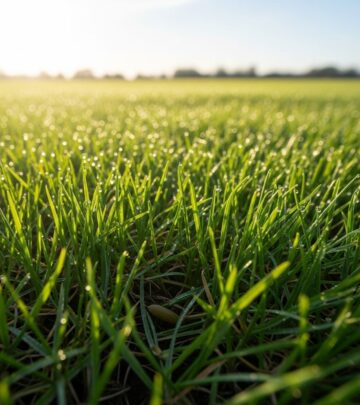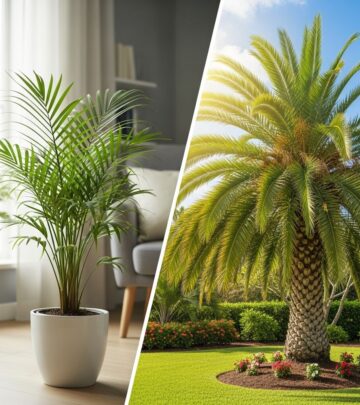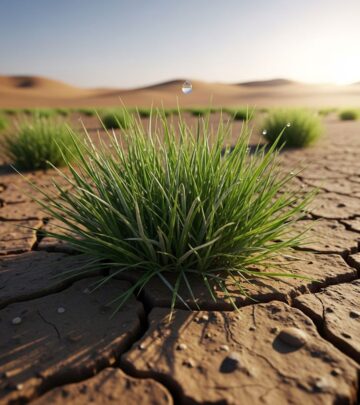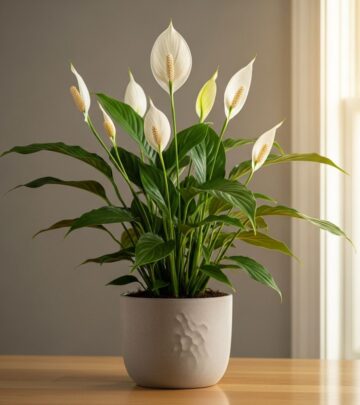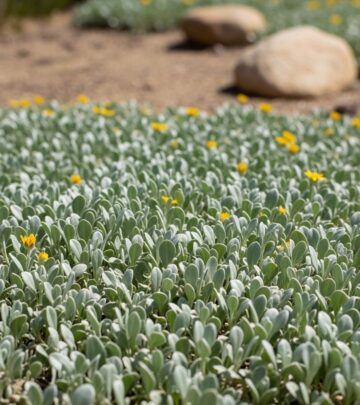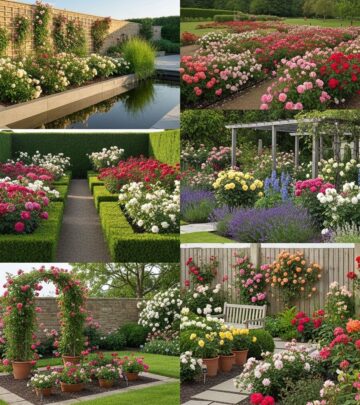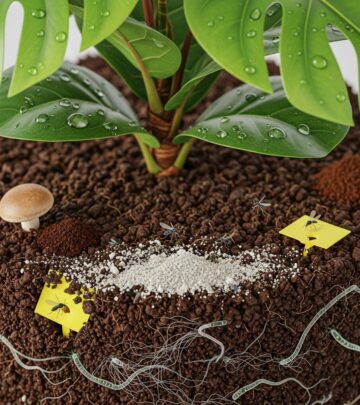Japanese Moss Garden: Essential Guide To Cultivation And Design
Discover how moss transforms Japanese gardens into sanctuaries of peace and timeless beauty

Image: HearthJunction Design Team
The Sacred Role of Moss in Japanese Garden Design
In the world of Japanese gardens, moss is far more than a simple groundcover—it’s a living testament to time, patience, and the profound Japanese appreciation for subtle beauty. These velvety green carpets transform ordinary landscapes into extraordinary spaces of deep tranquility and transcendent beauty, inviting contemplation and stillness. While Western gardens often celebrate the vibrant and the bold, Japanese garden traditions embrace moss as a cornerstone element that eloquently speaks the language of restraint and refined elegance.
Moss gardens in Japan are not merely decorative features but spaces of profound cultural and spiritual significance. The Japanese have cultivated a unique relationship with moss for centuries, recognizing its ability to capture the wabi-sabi aesthetic—finding beauty in imperfection and impermanence. The soft, ancient presence of moss represents islands in the symbolic landscape, creating microcosms of natural harmony that reflect the broader world in miniature form.
Historical Significance of Moss in Japanese Culture
The Japanese fascination with moss dates back centuries, with historical gardens showcasing moss as a deliberate design element rather than an accidental growth. In traditional Japanese garden design, each element carries symbolic weight—stones represent mountains, sand or gravel represents water, and moss often represents islands or lush forests. This symbolic language creates gardens that are not merely pleasant to look at but meaningful landscapes that tell stories and invite meditation.
Ancient temple gardens throughout Japan demonstrate the timeless appeal of moss. These verdant carpets have been meticulously maintained for hundreds of years, creating living connections to the past. The moss-covered grounds at temples like Saihō-ji (commonly known as Kokedera or “Moss Temple”) in Kyoto showcase how moss gardens mature and develop character over time, becoming more beautiful with each passing year—a perfect metaphor for the Japanese appreciation of aging and patina.
Why Moss Thrives in Japanese Gardens
The climate of Japan provides ideal conditions for moss cultivation, with its humid summers and generally moist environment. Many regions of Japan receive abundant rainfall, particularly during the rainy season, which creates natural conditions where moss flourishes. The Japanese archipelago’s varied topography, from mountains to coastal areas, supports diverse moss species that have been incorporated into garden designs across the country.
Beyond climate, the Japanese gardening tradition has perfected techniques for encouraging moss growth. Garden designers select sites with appropriate light conditions—typically dappled shade under tree canopies—and prepare soil with proper drainage and acidity levels. The traditional Japanese garden’s emphasis on tree canopy and controlled water features naturally creates microclimates where moss thrives, making these gardens self-sustaining ecosystems when properly designed.
Popular Moss Varieties in Japanese Gardens
Japanese gardens feature diverse moss species, each bringing unique textures and qualities to the landscape. While there are over 12,000 moss species worldwide, certain varieties have become mainstays in traditional Japanese garden design due to their resilience, appearance, and symbolic qualities. Understanding these varieties helps garden designers select the appropriate moss for specific garden conditions and aesthetic goals.
Carpet Moss Varieties
Carpet mosses create lush, unbroken surfaces that resemble green velvet when established. Hypnum species form dense, feathery carpets that withstand light foot traffic and adapt well to varied conditions. Star moss (Tortula ruralis) creates distinctive star-shaped patterns when viewed up close, adding visual interest to garden floors. These carpet varieties effectively blur the lines between different garden elements, creating seamless transitions that are prized in Japanese design.
Cushion Moss Varieties
Cushion mosses form rounded, pillow-like growths that add dimension to garden floors. Leucobryum species create pale green mounds that catch light beautifully, especially when morning dew clings to their surfaces. Dicranum varieties form deeper green cushions with distinctive textures that complement stone features. These mosses are often used to create undulating landscapes in miniature, representing hills and mountains within the garden’s confined space.
Creating Your Own Moss Garden: Site Selection and Preparation
Choosing the right location in your garden for moss is critical, with a balance of light and shade being key factors. Most moss varieties prefer dappled shade rather than deep shade or full sun. Areas beneath deciduous trees provide ideal conditions, offering protection from harsh summer sun while allowing winter light to reach the moss when trees have shed their leaves. North-facing locations generally provide the consistent moisture and indirect light that moss prefers.
Soil preparation begins with clearing the area of competing vegetation and debris. Unlike flowering plants, moss doesn’t require fertile soil—in fact, it often thrives in poor soil conditions where other plants struggle. The key soil factors for moss are:
- Acidity: Most moss varieties prefer slightly acidic soil with pH between 5.0 and 5.5
- Compaction: Lightly compacted soil provides a stable surface for moss to attach to
- Moisture retention: The soil should hold moisture without becoming waterlogged
Preparing the ground by removing weeds, smoothing the surface, and ensuring proper moisture levels creates an inviting environment for moss establishment. Some gardeners apply a thin layer of clay or acidic soil amendments to create ideal conditions before introducing moss.
Moss Cultivation Techniques
There are several approaches to establishing moss in your garden, each with advantages depending on your timeline and resources. Transplanting existing moss from another location provides immediate visual impact but requires careful handling to ensure the moss attachs to its new location. When transplanting, it’s essential to keep the moss intact with its growing medium and to firmly press it into contact with the prepared soil surface.
For larger areas, the fragmentation method offers an efficient alternative. This involves taking established moss and breaking it into small fragments that are then spread over the prepared area. These fragments will gradually grow together to form a continuous carpet if kept consistently moist. Some gardeners create a “moss slurry” by blending moss with water and yogurt or buttermilk, then painting or spraying this mixture onto surfaces where they want moss to grow.
Patience is perhaps the most important element in moss cultivation. Unlike conventional gardens that provide quick gratification, moss gardens develop slowly, revealing their beauty gradually over months and years. This slow development is part of the contemplative nature of Japanese gardens—the garden itself teaches patience and appreciation for subtle changes over time.
Maintaining Your Moss Garden
The beauty of established moss gardens lies partly in their minimal maintenance requirements compared to conventional gardens. However, specific care practices help maintain their health and appearance. Regular but gentle watering is essential, particularly during establishment and dry periods. Misting systems work well for moss gardens, providing the gentle moisture moss prefers without disturbing its delicate structure.
Keeping the moss garden free of debris requires regular attention, especially in autumn when fallen leaves can smother moss if left in place. Gentle raking with bamboo rakes or careful hand-removal of debris preserves the moss’s surface. Unlike conventional gardens, moss gardens require no fertilization—in fact, fertilizers can harm moss by encouraging competing vegetation.
Weed management presents an ongoing challenge in moss gardens. Hand weeding remains the most effective and appropriate method, as chemical herbicides can damage moss. Establishing a regular practice of carefully removing emerging weeds before they can establish prevents them from competing with or disrupting the moss carpet.
Integrating Moss with Other Japanese Garden Elements
The harmonious relationship between moss and stone represents one of the most iconic pairings in Japanese garden design. Weathered stones emerging from a sea of moss create a powerful visual metaphor—islands rising from the ocean or mountains from mist-covered forests. This arrangement speaks to the Japanese concept of balance between elements, with the soft, living moss complementing the hard, enduring stone. The contrast creates visual interest while maintaining harmony.
Water features, from still ponds to gentle streams, complement moss gardens by enhancing humidity and creating reflective surfaces that add depth to the garden experience. The sound of water provides an auditory dimension that completes the immersive experience of the garden. In dry garden designs (karesansui), raked gravel or sand represents water, creating a different but equally powerful complement to moss areas.
Traditional Japanese garden design carefully considers the relationship between paths and moss. Stone stepping paths allow visitors to journey through moss areas without disturbing the delicate groundcover. These paths often follow irregular patterns, encouraging mindful walking and creating opportunities to view the garden from different perspectives. The journey through the garden becomes as important as the destination, encouraging visitors to slow down and fully experience each moment in the garden.
Spiritual and Meditative Aspects of Moss Gardens
Moss gardens invite contemplation through their subtle beauty and ever-changing nature. The minute variations in texture, the way light plays across the surface at different times of day, and the seasonal changes all reward close observation. This encourages a meditative state where the visitor becomes fully present, noticing details that might otherwise be overlooked. The garden becomes a tool for mindfulness practice.
In Zen Buddhist traditions, gardens serve as physical manifestations of spiritual principles. Moss gardens, with their simplicity and emphasis on subtlety, perfectly embody the Zen aesthetic. The slow growth of moss teaches patience; its resilience demonstrates perseverance; its ability to transform harsh surfaces into soft beauty speaks to transformation. These symbolic qualities make moss gardens particularly meaningful in temple settings.
Contemporary Adaptations of Moss Gardens
Modern garden designers have found creative ways to incorporate the traditional Japanese appreciation for moss into contemporary landscapes. Urban moss installations bring touches of this ancient tradition to city environments, often in unexpected places like wall gardens or courtyard features. Smaller-scale moss gardens, including container designs and terrariums, allow even apartment dwellers to experience the tranquility of moss cultivation.
Sustainable landscaping practices increasingly recognize moss as a valuable alternative to conventional lawns in appropriate settings. Moss requires no mowing, minimal water once established, and no fertilizers or pesticides, making it an environmentally friendly option. As water conservation becomes increasingly important, the low water requirements of established moss gardens make them appealing options for environmentally conscious gardeners.
Frequently Asked Questions (FAQs)
Q: Can moss gardens thrive outside of Japan’s climate?
A: Yes, moss gardens can succeed in many temperate climates with adequate moisture and shade. While Japan’s humidity creates ideal natural conditions, gardeners elsewhere can create microclimates that support moss growth through site selection, irrigation, and canopy management.
Q: How long does it take to establish a moss garden?
A: Moss gardens develop gradually, with initial establishment taking several months under ideal conditions. A truly mature moss garden may take 3-5 years to develop the lush, established character seen in ancient Japanese gardens. This slow development is considered part of the garden’s beauty and teaching.
Q: Is it ethical to collect moss from the wild for gardens?
A: Collecting moss from public lands is often restricted or prohibited. The most ethical approaches include purchasing moss from specialized nurseries, propagating from small samples with permission, or encouraging natural moss growth in suitable garden conditions.
Q: Can moss replace a conventional lawn?
A: In shaded areas where grass struggles, moss can create a beautiful alternative to conventional lawns. However, moss cannot withstand the same foot traffic as grass and is best suited for lightly used areas or viewing gardens rather than play spaces.
Q: How do I prevent moss from growing where I don’t want it?
A: Increasing sunlight, improving drainage, raising soil pH with lime, and ensuring adequate air circulation all discourage unwanted moss growth. Regular cleaning of hard surfaces prevents moss establishment in unwanted areas while allowing it to flourish in designated garden spaces.
References
- https://www.gardendesign.com/japanese/moss.html
- https://designheights.co.uk/how-to-create-a-japanese-inspired-garden/
- https://www.shizenstyle.com/post/the-complete-guide-to-small-japanese-gardens-1
- https://mossacres.com/pages/japanese-garden-design
- https://zenfusionhome.com/japanese-garden-moss-ultimate-species-guide-easy-care-tips/
Read full bio of Srija Burman



